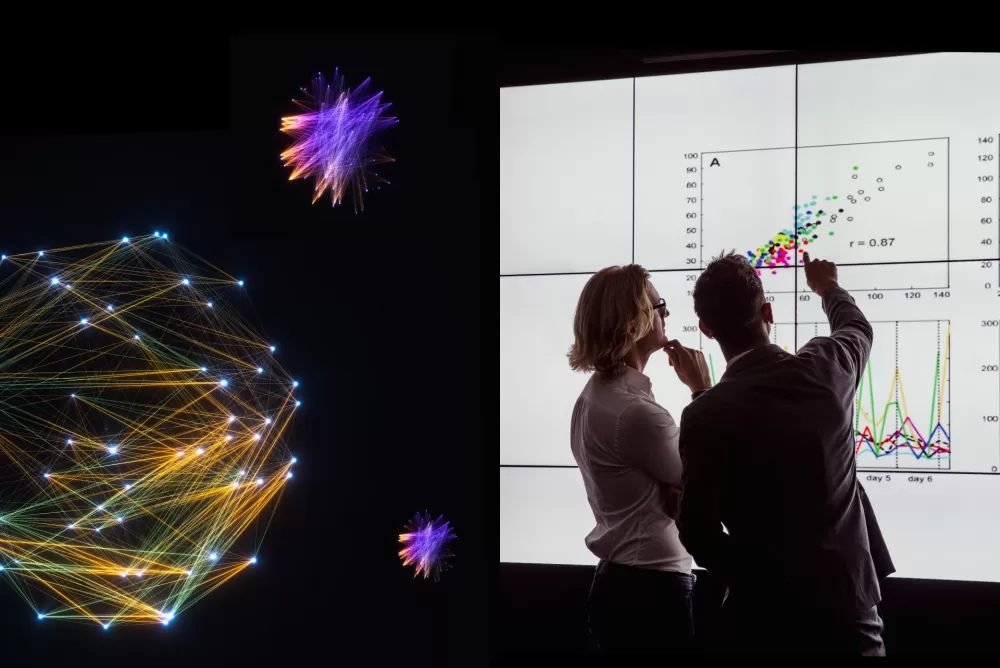
Blockchain – Unleashing the Power of a Decentralized Web 3.0
Ever since the use of the internet exploded a couple of decades ago, everyone has embraced it to create, build, and utilize it to enhance their lives in the digital age. Whether it’s digital banking, digital marketing, expanding your virtual network via social platforms, online shopping, or transforming the way business happens, there are few on this planet who this digital era has not touched.
By 2008-2009, another new paradigm began emerging – one that most have heard of in some context or the other: Bitcoin, a.k.a digital or cryptocurrency. The emergence of Bitcoin is significant to the future of the web and has its underpinnings in two core concepts – decentralization and blockchain.
Centralized internet
The current web or internet is largely centralized, implying that the power and control mainly rests with a few entities. Everyone is well aware of the influence BigTech (often called FAANG^) has on what you see when you log in on an app or website (digital advertising), what content you consume in your social feeds (digital content, streaming channels, news feeds), what [cloud] services you are required to subscribe to, in order to check email or manage your digital content (photos and videos), and so much more. As more and more of this has begun to happen over the internet, users and communities have raised data privacy concerns, leading to strict rulings and actions (such as the GDPR) protecting the rights and data of users and entities.
^FAANG = Facebook (now Meta), Apple, Amazon, Netflix, Google
In 2008, an anonymous person or group known as Satoshi Nakamoto introduced the concept of blockchain through the invention of Bitcoin, the first cryptocurrency. This invention results from various developments over decades to enable, secure, and decentralize systems.
Bitcoin and blockchain: Ushering the decentralized web
With the advent of Bitcoin, we are entering the age of the next generation of the internet or web, called Web 3.0, the decentralized web.
Thus, in hindsight, the previous generations of the web are now referred to as Web 1.0 (the early, static web) and Web 2.0 (the era of platforms, making the web dynamic and interactive). But, to offer decentralization, Web 3.0 needs another critical technology – a foundational element, if you may: blockchain.
Blockchain is a distributed ledger technology (DLT) that enables secure, transparent, and immutable record-keeping. It operates on a decentralized and distributed network of computers, known as nodes, where each transaction is verified and stored in a block. These blocks are linked together, forming a chain of information that cannot be altered or tampered with easily.
This model is quite different from the prevalent model in today’s world, that of centralized systems (albeit operating in a distributed mode, enabled by the internet), where major companies – and almost everyone – store the data in their proprietary systems and databases. Even banks, for example, maintain records in their own servers and databases, typically via services provided by intermediaries (such as depositories). Thus, getting access to the data, validating it, or updating it cannot be achieved without such intermediaries. This creates inefficiencies and introduces additional costs (such as those incurred when paying via credit cards since it operates via the centralized settlement network offered by the large providers) for processing.

Disruptive user-centric force
Blockchain is seen as a disruptive approach that transforms the foundations of systems that have existed worldwide for decades. As the world’s longest-running successful blockchain system, Bitcoin is just an example of this. Bitcoin’s rising popularity (besides the speculative hype surrounding it) is due to its convenience (lack of any intermediaries and no geographical or organizational boundaries), fast processing (near-real-time transfer of funds between parties), and transparency and trust (enabled via the technology that is inherently enabled by cryptography).
The decentralized web envisions an internet where users regain control of their data, privacy is prioritized, and interactions are peer-to-peer, eliminating the need for intermediaries. As depicted in the graphic above, Web 3.0 aims to drive or enable the transfer and exchange of value directly between peers without intermediaries. Web 1.0 was primarily focused on a static web and is hence called the ‘read-only web,’ while Web 2.0 drove the shift from passive consumption to active user participation. Web 2.0 facilitated user-generated content, social media platforms, online collaboration, and interactive web applications, enabling individuals to create and share information, engage in social interactions, and contribute to the online ecosystem. Web 2.0 thus has come to be called the ‘read-write web.’
In contrast, Web 3.0 strives for a more open, transparent, and user-centric online experience. Web 3.0 is still evolving, and while its first stage (since around 2009) has only been in the realm of digital currency and Bitcoin, the advent of new blockchains, such as the popular Ethereum public blockchain, and the recent interest garnered by Non-Fungible Tokens (NFT) (in the latter half of 2021) has been driven by the use of smart contracts and tokenization. As the hype around NFTs started growing, it ushered opportunities for marketplaces to facilitate and ease the discovery, buying, selling, and re-selling of NFTs, albeit enabled by blockchain at its core.
However, while we are still in this stage of evolution, it continues to see growth in adoption and the rise of decentralized apps (DApps), which cater to a broad range of use cases across industry domains, though the most prominent one remains finance or financial services.
Evolving toward interoperability
As with all new paradigms, evolution takes place to address technological, societal, and regulatory aspects. Technologically, scalability and performance challenges (such as in the case of Ethereum) have been critical aspects, and work is already being done to address this through the first stage of the much-talked-about Ethereum 2.0 upgrade. It must be noted that many blockchains are being developed by various entities coming together. Thus, the interoperability aspect will become a significant consideration to cater to future needs.
“Web 3.0 has the potential to transform industries beyond finance, allowing for decentralized governance, secure digital identity, and new business models that prioritize privacy and user control.”
- Kathleen Breitman, Co-founder of Tezos
Each industry will expect different capabilities of the new Web ecosystem to enable seamless experiences, interactions, transactions, and digital enablement across the physical and digital worlds. This will also be driven in part by the expanding interest in the metaverse, which is, ultimately, a convergence of the physical and digital worlds, combining a gamut of technologies. Thus, blockchain technology is – and continues to evolve as – the foundation for the new generation of the internet.
According to Gartner, “Metaverse is a collective virtual 3D shared space, created by the convergence of virtually enhanced physical and digital reality. A metaverse is persistent, providing enhanced immersive experiences. A complete metaverse will be device-independent and will not be owned by a single vendor. It will have a virtual economy of itself, enabled by digital currencies and NFTs.”
According to the World Economic Forum (WEF), the global Web 3.0 market was valued at USD 3.2 billion in 2021 and is expected to register a CAGR of 43.7 percent. With technology innovators working frantically to develop DApps, the pace of innovation in this new age is only likely to accelerate further. Welcome to the future web!
Zensar’s Blockchain Technology Services
Zensar has been incubating capability in blockchain technology since 2017-18. The Blockchain Technology Group is within the umbrella of ZenLabs, our Emerging Technology and Applied Research and Innovation Group. As industry interest began expanding, Zensar has engaged in multiple co-innovation projects for our clients in banking, insurance, retail, and non-profit/government, developing and successfully delivering these projects on public and private blockchain platforms. We continue to see steady traction on client co-innovations using Web 3.0, blockchain, and metaverse and are excited to focus on this as it evolves.
Additional reading material -



